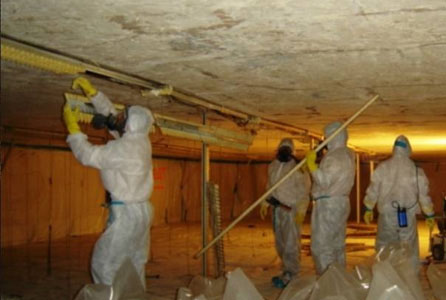
Asbestos Abatement
Asbestos is a naturally occurring silicate mineral. It was often used for manufacturing and industrial usage because of its ability to resist heat, insulate and its flexibility to be woven. However, the asbestos will cause a series of health problems if you are exposed to it. Asbestosis will bring a series affects on your respiratory system and the lungs. Living or working in an environment that contains the asbestos, the chance of getting lung cancer is increased than others. Besides, it also could subsequently cause heart issues where the oxygen in blood is blocked Thus, it is dangerous to be exposed to asbestos in this way.
Evaluating for Asbestos
Asbestos is not immediately dangerous so long as it is in good condition. It doesn't have cracks or damage and is inspected regularly. But, if there is any suspicion of it being airborne, it is highly recommended to remove it. You should check or determine whether there is any asbestos danger in your house by hiring a professional inspector to survey the facility before going to proceed with your renovation or demolition.
Dealing with Asbestos Abatement
There are four ways to deal with your asbestos in a home or building which are: enclosure, encapsulation, repair or removal. But, most of the people would choose abatement to remove all the asbestos in the house. Just for your information, abatement might the most dangerous way to deal with it, as there is a high risk for airborne asbestos particles during the removal process. However, due to certain reasons, people will choose to do the asbestos abatement. Normally, the typical reasons will be to renovate, reduce liability and comply with regulations.
Asbestos Abatement Process
The whole process could be divided into three phases: before abatement, during abatement and after abatement. Before abatement, samples will be taken and tested by the accredited asbestos laboratory. A professional inspector will be hired in order to perform a baseline survey and identify all areas, which contain the asbestos. The owner needs to give 10 days’ notice to the state department prior to any demolition.
Second phase will be during abatement where the building has to be kept wet with water or a mixture of soap and water during the removing process. This step is to prevent and reduce the chance of it getting airborne. Lastly, the air quality must be measured during and after the abatement. It is to ensure the safety of the occupants of the building.
Some people would consider doing abatement by their own. But, the abatement is a complicated process where it needs professional knowledge and skill to do the removal process. Thus, it is not advisable to do the asbestos removal on your own if you do not have any confidence to handle each step clearly.
